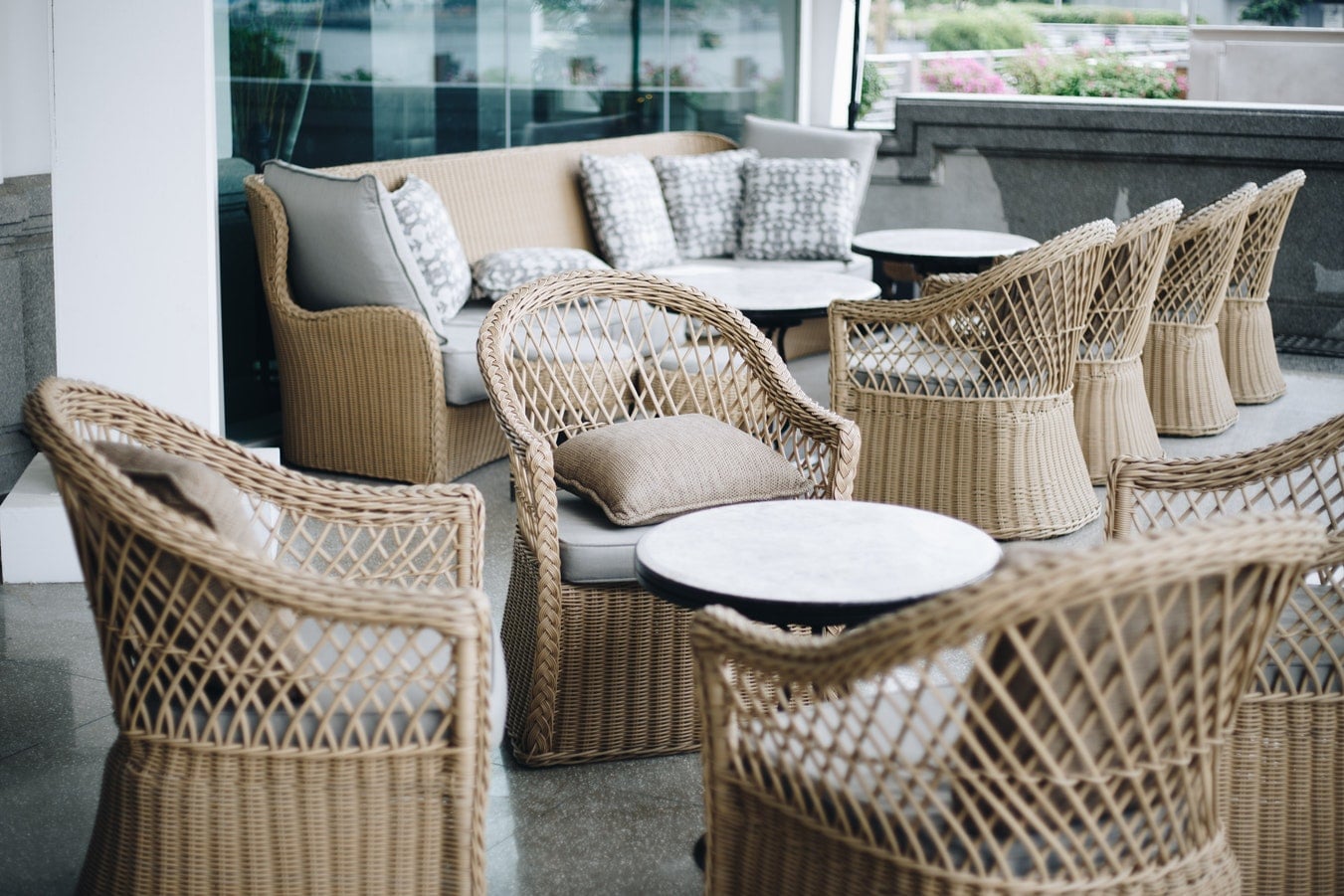Choosing outdoor furniture is not something you should rush – if you’ve never thought about it before, that is. If you’re a seasoned outdoor lover, you have probably done the groundwork already.
Let’s say you’ve thought about it and gone for wicker. Excellent choice, Sir or Madam, and may I recommend the chilled cranberry juice or perhaps a bottle of Roederer Cristal to help you enjoy your furniture’s maiden outing?
There is something about wicker that makes it a cut above most outdoor furniture materials in terms of character. But like all great characters, this one is not straightforward when it comes to maintenance.
Wicker Varieties
The first thing to establish is whether yours is traditional, plant-based wicker or a synthetic one. Plant-based means it’s made of rattan or some other natural material that belongs to the world of wood, vines etc.
The synthetic varieties are now much more sophisticated than they once were, and we’re talking about words such as “resin” and “polymer.” You should probably do some research to make sure you know what your wicker furniture is made of.
The big advantage of the synthetic varieties is that they are much easier to maintain. Keeping your outdoor furniture pest-free can be a challenge. However, if it looked great in the first place, you want to keep it looking that way.
So let’s look at some basics.
Insects prefer gardens to sterile environments (bathrooms, laboratories etc.) because gardens are full of organic stuff and debris – things they can eat and places they can live. They don’t like what we would call clean places – so we have to make sure our outdoor furniture is not an insect haven.
The air in your garden may look clean and smell sweet and natural, but it’s full of microscopic particles of organic debris: tiny specks of grass and plant leaves, pollen, tree bark – and that’s just the nice list. The birds that add such charm to an outdoor area don’t leave the premises to use the bathroom, and they don’t go to a veterinarian to get de-bugged. It all happens right there in your green and pleasant land.
So by nature’s design and the force of gravity, all of that comes floating down to earth and if your wicker chairs are in the way, the debris lodges there. And hey presto: a nice little home for bugs. All those nooks and crannies and a perpetual supply of food.
Tip 1 – The Shakedown
Dust it. Go at it with a brush to get everything out. Shake it. Take a vacuum cleaner to it (with the brush attachment). All the things you would do in the house, vacuuming down behind the cushions on the sofa and under the chairs, you need to do to keep your outdoor furniture pest-free.
Tip 2 – Bath Time
You’ll have to be careful with this if you’ve got natural wicker, but a damp cloth and some soapy water should remove anything that brushing and vacuuming miss. And wipe off any excess with a dry cloth.
Tip 3 – Chemical Warfare
If humidity has done its stuff and you’ve got some mold and mildew that soap doesn’t deal with, you can use a weak solution of bleach or something along those lines, but if you’re treating natural wicker, be very careful. Try it on an area that isn’t usually visible and see what effect it has. With synthetic wicker, you’re less likely to have this problem and if you do, you can attack it more energetically.
Tip 4 – Give It Some Hot Air
When you’ve finished with the bed bath, a hairdryer is the perfect way to make sure you haven’t left any moisture in the wicker, because leaving it damp is asking for trouble. You may look and feel a bit odd climbing all over your furniture with a whirring Revlon in one hand and an old toothbrush in the other to put the finishing touches to your work, but this is a labour of love.
Now, you may feel a little self-conscious climbing all over said furniture with a hairdryer in one hand and a toothbrush in the other… You may even be fearing your neighbors are just happening to glance out of an upstairs window, seeing your efforts, and saying to their spouse, “You’ll never guess what they’re doing now!”
However, this is a labor of love – to regularly shake it, bathe it, declare chemical warfare on it, and blow it – to keep your wicker furniture as clean and elegant as it was the day you brought it home, and, more importantly, to keep it pest-free.
Summing Up
Have you got a secret of your own for keeping your wicker outdoor furniture pest-free? Feel free to leave a comment below and share it with your fellow wicker admirers.
Related Article: 9 Natural Ways to Get Rid of Pests in Your Garden










